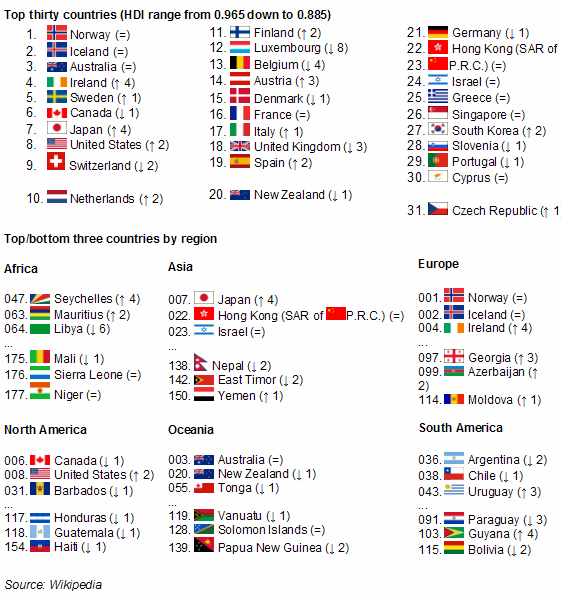Human Development Index
Bildvorschau, Links nicht aktiv:

2006 report
The report for 2006 was launched in Cape Town, South Africa on November 9, 2006. Its focus was on "power, poverty and the global water crisis." Most of the data used for the report are derived largely from 2004 or earlier, thus indicating an HDI for 2004. Not all UN member states choose to or are able to provide the necessary statistics.
The report showed a stagnation in world HDI, as the continued improvement of developed countries was offset by a general decline of the developing world. Countries in Sub-Saharan Africa and South Asia showed an important decline in HDI, in comparison with last year's report. Other developing regions showed little to no improvement.
An HDI below 0.5 is considered to represent low development and 29 of the 31 countries in that category are located in Africa, with the exceptions of Haiti and Yemen. The bottom ten countries are all in Africa. The highest-scoring Sub-Saharan countries, Equatorial Guinea and South Africa, are ranked 120th and 121st, respectively (with a shared HDI of 0.653).
An HDI of 0.8 or more is considered to represent high development. This includes all developed countries and some developing countries in mainly Eastern Europe, Latin America, Southeast Asia and oil-rich Arabian Peninsula.

Dokument herunterladen [.doc][192 KB]
Quelle:
"Human Development Index."
Wikipedia, The Free Encyclopedia.
